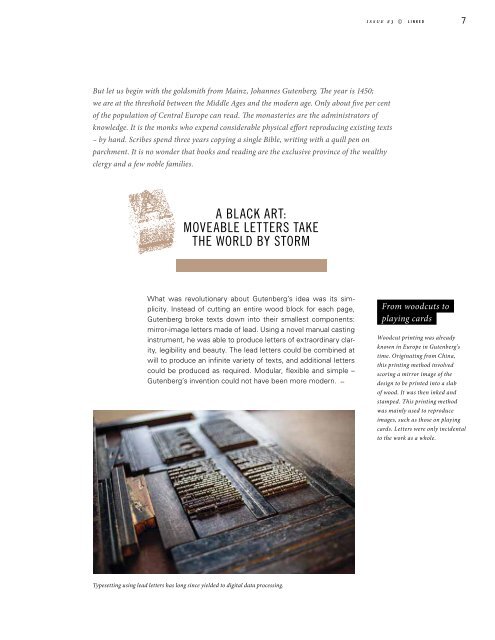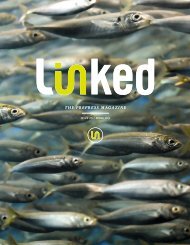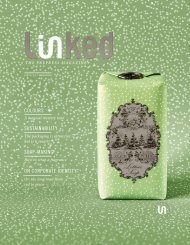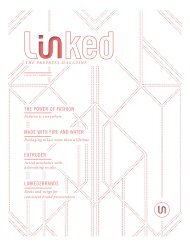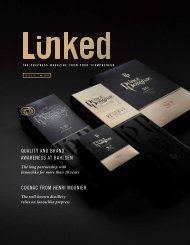You also want an ePaper? Increase the reach of your titles
YUMPU automatically turns print PDFs into web optimized ePapers that Google loves.
issue #3 ©<br />
l i n k e d<br />
7<br />
But let us begin with the goldsmith from Mainz, Johannes Gutenberg. The year is 1450;<br />
we are at the threshold between the Middle Ages and the modern age. Only about five per cent<br />
of the population of Central Europe can read. The monasteries are the administrators of<br />
knowledge. It is the monks who expend considerable physical effort reproducing existing texts<br />
– by hand. Scribes spend three years copying a single Bible, writing with a quill pen on<br />
parchment. It is no wonder that books and reading are the exclusive province of the wealthy<br />
clergy and a few noble families.<br />
A black art:<br />
moveable letters take<br />
the world by storm<br />
What was revolutionary about Gutenberg’s idea was its simplicity.<br />
Instead of cutting an entire wood block for each page,<br />
Gutenberg broke texts down into their smallest components:<br />
mirror-image letters made of lead. Using a novel manual casting<br />
instrument, he was able to produce letters of extraordinary clarity,<br />
legibility and beauty. The lead letters could be combined at<br />
will to produce an infinite variety of texts, and additional letters<br />
could be produced as required. Modular, flexible and simple –<br />
Gutenberg’s invention could not have been more modern.<br />
From woodcuts to<br />
playing cards<br />
Woodcut printing was already<br />
known in Europe in Gutenberg’s<br />
time. Originating from China,<br />
this printing method involved<br />
scoring a mirror image of the<br />
design to be printed into a slab<br />
of wood. It was then inked and<br />
stamped. This printing method<br />
was mainly used to reproduce<br />
images, such as those on playing<br />
cards. Letters were only incidental<br />
to the work as a whole.<br />
Typesetting using lead letters has long since yielded to digital data processing.


